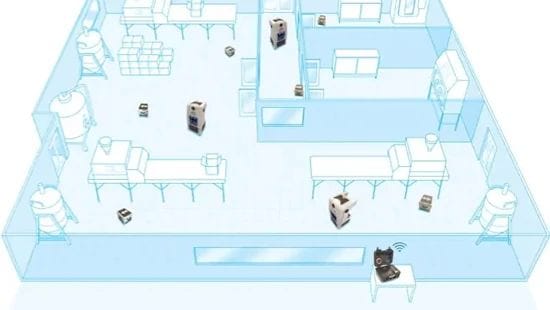Hydrogen Peroxide Fogging Versus Bioquell’s Hydrogen Peroxide Vapor
They may sound alike, but there are major differences between hydrogen peroxide fogging and Ecolab’s Bioquell hydrogen peroxide vapor technology.
Understanding the differences can help you choose the most effective bio-decontamination system for your facility.
Compare Vaporized and Fogged Hydrogen Peroxide
Similar But Different
Both vapor and fogging distribute a hydrogen peroxide solution into the air, with the goal of killing microorganisms on exposed surfaces. But fogging is a distinctly different technology from vapor. Fogging systems produce aerosol droplets that typically range from 8-12 microns in diameter.
In contrast, vaporized hydrogen peroxide is a vapor, unaffected by gravity unlike aerosolized liquid droplets. This affects how evenly the solution is distributed, both in the air and on surfaces.
Effectiveness
According to a study in Infection Control and Hospital Epidemiology (ICHE)*, a single Bioquell system was more effective and faster than two hydrogen peroxide fogging units. Fogging failed to deactivate 50% of the biological indicators over a series of tests, while Bioquell achieved a 100% success rate.
*Source: pubmed.ncbi.nlm.nih.gov/21828962
Active Ingredients
Bioquell’s hydrogen peroxide vapor technology uses a 35% hydrogen peroxide solution, with no other active ingredients. Some fogging options attempt to account for a lower hydrogen peroxide level, ranging from 1-20% percent, with additives such as peracetic/acetic acid, <50ppm silver ions and orthophosphoric acid being distributed in your patient rooms.
Coverage
Hydrogen peroxide vapor deposits an even layer of micro-condensate on all exposed surfaces in an enclosed area, providing consistent efficacy. The unique vaporizing process is able to cover complex shapes and tough-to-reach areas.
With fogging systems, the droplets are in the liquid phase (not vapour) which are prone to the effects of gravity, therefore distribution is challenging. This means that hidden surfaces like the underneath of tables will not be effectively bio-decontaminated by fogging systems.

Hydrogen Peroxide Vapor Systems and Services
Hydrogen peroxide vapor technology has many advantages over fogging technology. Ready to explore your options for hydrogen peroxide vapor systems? See our full line of Bioquell equipment.
Benefits of Bioquell Technology

Results Oriented
Whether you want a real-time indication of expected results or a validated cycle, Bioquell offers chemical indicators (CIs) and biological indicators (BIs) to showcase results.
Eliminate Microorganisms
Bioquell technology achieves a 6-log sporicidal kill on exposed surfaces — a reduction of 1,000,000 spores on a surface.
Effective
Bioquell technology uses a high-purity 35% aqueous solution of hydrogen peroxide to produce the microorganism-killing H202 vapor. With our systems, there are no additional steps to remove residue. This means there’s no need to wipe down after a cycle.

Focus on Safety
Each Bioquell system comes with a handheld sensor to easily assess leaks, and ensure that your room is fit for re-entry at the end of a bio-decontamination cycle.


